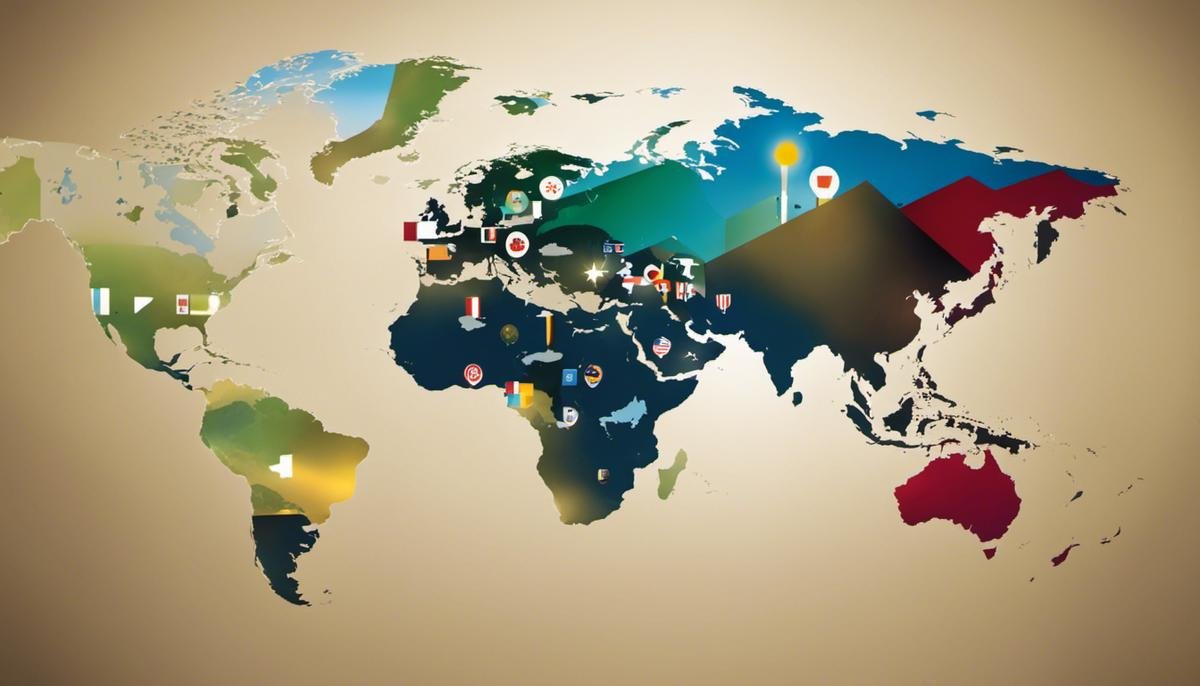Maximizing Benefits from Country Code Domains
In the digital age where the internet plays a pivotal role in all aspects of life, a key strategic element that is often overlooked by many is the operation and advantages of country code domains (ccTLDs). As integral parts of the global internet structure, ccTLDs have the capacity to fundamentally alter how businesses and organizations present themselves online, tapping into local customer bases causing a substantial influence on localized user experience, brand identity, and SEO ranking. By comprehensively understanding what ccTLDs are, how they function, and the clever tactics to leverage them, users can amplify their online visibility, reach, and credibility to an exponential degree.
Understanding Country Code Domains
A Dive Into Country Code Domains and Their Mechanics
Every innovator, early adopter, or tech enthusiast appreciates novelty. The bleeding-edge of technology offers a unique sense of thrill, but the enduring foundations deserve equal, if not more, focus. Among these cornerstones is the concept of Country Code Top-Level Domains (ccTLDs). Often seen, yet rarely discussed, ccTLDs are a vital piece of the World Wide Web’s architecture, catering to various utilities and strategies. So, what exactly are ccTLDs, and how do they function?
At a glance, ccTLDs are Internet top-level domains reserved by a country, sovereign state, or dependent territory. They are two-letter codes identifying the jurisdiction or geographical area to which a website pertains. The Internet Assigned Numbers Authority (IANA) regulates these codes, helping maintain Internet stability across the globe.
Picture this. A URL is much like a physical address. ccTLDs equip the internet user with the location dial code, the country of origin. Got ‘.us’ as the suffix? That’s a United States-based web address. Find ‘.jp’ at the end of a URL? Welcome to a Japanese website. Currently, over 250 ccTLDs exist, each associated with a particular country or territory.
For those who’ve adopted an analytical perspective, you’ll quickly understand why ccTLDs are essential in hosting and plan strategies. They allow organizations to show their association with specific regions, improving search engine optimization (SEO) by ranking them higher in local search results. This technique, hyperlocal targeting, is a game-changer for businesses aiming to penetrate specific geographical markets.
Of course, it isn’t as straightforward as it seems. For instance, not every ‘.tv’ ccTLD pertains to television, but rather it’s assigned to Tuvalu, a country located in the Pacific Ocean. These domain names have been highly commercialized, operating beyond their original, geographically-linked purpose.
Another intricate element is the ‘Google effect.’ The search engine treats specific ccTLDs like ‘.co’, ‘.tv’, ‘.me’, etc., as generic TLDs, assigning no regional bias to them. This fact nudges organizations towards a strategic decision: go with a generic TLD or lean on a ccTLD to solidify local roots.
Furthermore, the restrictions on acquiring ccTLDs vary. Some require local presence, others fiscal involvement, and a few are available unrestricted to the worldwide community.
Conclusion? While understanding ccTLDs may not boast the glittering appeal of the latest gadget, it is undeniably crucial to comprehend the functioning of this fundamental tech underpinning. Possessing knowledge about the relatively “quieter” aspects of technology often makes the difference between casual enthusiasts and genuine connoisseurs. Harness the power of ccTLDs, and let these unsung heroes guide your business or interest towards a more global reach.

Strategies for Leveraging Country Code Domains
Leveraging Country Code Domains: Strategic Benefits
Having shed light on the definition, function, and importance of Country Code Top-Level Domains (ccTLDs) in the previous section, it’s time to explore strategic ways to leverage these digital assets. Harnessing ccTLDs within disjoint technology and marketing strategies can unlock significant potential, allowing businesses to tap into specific markets, improve localization efforts, and get an edge in SEO campaigns.
Marketing Localization Using ccTLDs
The power of localization in digital marketing cannot be overemphasized. Personalizing your online experience to reflect local languages, cultures, and interests significantly boosts credibility, trustworthiness, and user engagement. A .de domain says ‘Hallo’ to German customers, while a .jp domain greets its Japanese counterparts with a resounding ‘Kon’nichiwa’. Tailored content, within a localized domain, can be your ace card in the saturated world of digital marketing.
Gain Trust with a Local Presence
Credibility is key in the digital realm. A ccTLD demonstrates commitment, a serious investment, and an understanding of the local landscape. Potential customers are more likely to trust businesses when they operate under a recognizable and familiar domain. This local digital ‘street cred’ generates conversion-friendly trust signals, swaying cautious consumers, and driving repeat business.
SEO: Play the Local Preference Card
Google loves localization, and ccTLDs can make a significant difference in locally focused SEO efforts. ccTLDs send strong geo-targeting signals to search engines, emphasizing the business’s intent to serve a specific local audience. Therefore, such domains often receive preferential treatment in country-specific search results. For businesses targeting multiple regions, concurrently running various country-specific websites can surge local search ranking performance.
Brand Protection and Expansion
Adding various ccTLDs under your brand umbrella shields against cybersquatting, protecting your brand across different geographical zones. Additionally, using ccTLDs allows for selective market expansion. As the business grows, this ensures a smooth online transition into new countries or regions.
Experience Language-Specific Benefits
A largely unexplored yet equally pivotal benefit of ccTLDs comes with target language considerations. Certain keywords have different popular spellings or variations in other languages. Owning ccTLDs can opportunistically deploy such tweaks, optimizing content effectively in its organic language.
However, remember that ccTLDs, while potent, are a part of the holistic online strategy. It’s crucial to complement this approach with other local optimization measures, quality content, and user-friendly website design.
Leveraging ccTLDs can propel your business’s digital presence substantially. However, it requires a well-thought-out, customized strategy, and painstaking execution. As always, in digital marketing and technology, there’s no one-size-fits-all. Analyze, adapt, implement, and conquer.

Benefits of Using Country Code Domains
To extend the discussion of country code top-level domains (ccTLDs), let’s delve into additional benefits they bring, particularly concerning marketing strategies, getting the trust of local markets, and leveraging SEO to preference local content.
Marketing is a critical component to any successful web-based business or platform; it provides the driving force behind traffic and user growth. With ccTLDs, local marketing becomes a dynamic strategy that organizations can employ. With a defined region, specific marketing strategies that resonate with that locality can be employed to engage with a targeted audience. A ccTLD allows a website to customize its content and offerings to the local taste, weather, events, and cultural nuances, making users more likely to respond to calls to action.
Trust is an essential element for any website hoping to secure loyal customers or users. A ccTLD can help establish trust as it gives the impression of a local presence, even if that company is not physically located in the region. The use of a ccTLD shows an investment and commitment to serve that particular market. It’s a powerful signal that can lead to increased user engagement and higher conversion rates.
In search engine optimization (SEO), location-based searching plays a prominent role due to the rapid growth of mobile technology and location-aware applications. Search engines often favor local content—information relevant to the searcher’s location. Imagine a user in France performing a search. A ‘.fr’ domain may appear higher in the search results, ensuring your site gains the right visibility. Essentially, a ccTLD allows websites to successfully play the local preference card.
Moreover, brand protection and expansion can be markedly enhanced through the use of ccTLDs. For businesses aiming for multinational presence, acquiring multiple ccTLDs can protect their brand from being misused. This provides a clean, consistent brand image across multiple markets and helps to prevent competitors from hijacking their brand visibility.
Beyond marketing, trust-building, SEO, and brand protection, ccTLDs also come with language-specific benefits. They allow website owners the flexibility to host different language variants of their content without the need for language parameter URLs. For instance, a ‘.de’ ccTLD can be used to host a German language version of a site, easily recognized and preferred by German-speaking users.
In the rapidly evolving digital ecosystem, the role of ccTLDs as pivotal in promoting trust, driving targeted marketing efforts, and prioritizing local SEO cannot be understated. Whether a budding startup or a multinational corporation, understanding and harnessing the power of ccTLDs is vital in establishing online presence and ensuring success in today’s technology-driven world.

Challenges and Solutions of Using Country Code Domains
While ccTLDs offer substantial benefits, such as boosting SEO rankings and enabling hyperlocal targeting, they come with their fair share of challenges. These issues, often overlooked in the rush to adopt the next big thing in tech, can make or break the success of a ccTLD strategy.
One of the most significant challenges is the complexity of managing multiple domains. This might seem like a minor inconvenience, but in practice, it can be a logistically daunting task. Each ccTLD requires its own management, and if an organization operates in multiple countries, this can lead to a large and multifaceted portfolio which demands extensive resources to maintain.
Then there’s the issue of compliance. Each country-specific domain extension has its own set of laws and requirements that domain owners must adhere to. These rules may encompass data protection, user privacy, spam regulations, and more. For example, the European Union’s General Data Protection Regulation (GDPR) is a key consideration for any organization using a ‘.eu’ ccTLD.
Content duplication is another major stumbling block in ccTLD usage. This occurs when the same content is available on different ccTLDs, causing search engines to penalize the website for duplicating content, which in turn affects rankings.
A further challenge lies in directing users to the correct domain. Technology isn’t always reliable in identifying a user’s location. Mistakes can lead to a poor user experience and potentially lost business. An American trying to purchase from a French site because they’re currently in France, for example, would likely experience frustration if faced with a language barrier or incorrect shipping information.
To address these challenges, organizations need a robust strategy. Relying on automation tools is one approach: they can manage multiple domains, ensure compliance, and weed out content duplication. However, they don’t solve everything. They’re not perfect, and they require human oversight.
For directing users to the correct domain, a clear and easy-to-answer opt-in question asking users their preferred language and location is a possible solution. This puts the choice in users’ hands and avoids alienating them through incorrect assumptions about their location.
It’s also worthwhile consulting with legal counsel to ensure compliance with respective laws for different ccTLDs. This minimizes the risk of breaches that could lead to fines or worse.
In dealing with content duplication, a combination of canonical tags and hreflang tags is useful.
Canonical tags tell search engines which version of the content to treat as the original, while hreflang tags tell them which language you’re using on a specific page.
In conclusion, while ccTLDs are powerful tools in the world of digital marketing and global reach, they’re not without their challenges. Effectively addressing these issues requires a combination of savvy tech, careful management, and an awareness of local nuances to really reap the rewards that ccTLDs offer.

As the complexities and nuances behind the use of country code domains are unraveled, it becomes increasingly clear that ccTLDs offer a myriad of benefits that shouldn’t be overlooked. Despite the potential challenges that may arise, such as availability concerns, legal issues, and cost implications, their implementation and clever deployment can provide potent solutions and opportunities for brands, organizations, and even individual online presence. Significantly enhancing localized SEO ranking, fine-tuning targeted marketing, and creating an improved localized user experience- ccTLDs undoubtedly hold the potential to be a game-changing asset in the dynamic online world.

